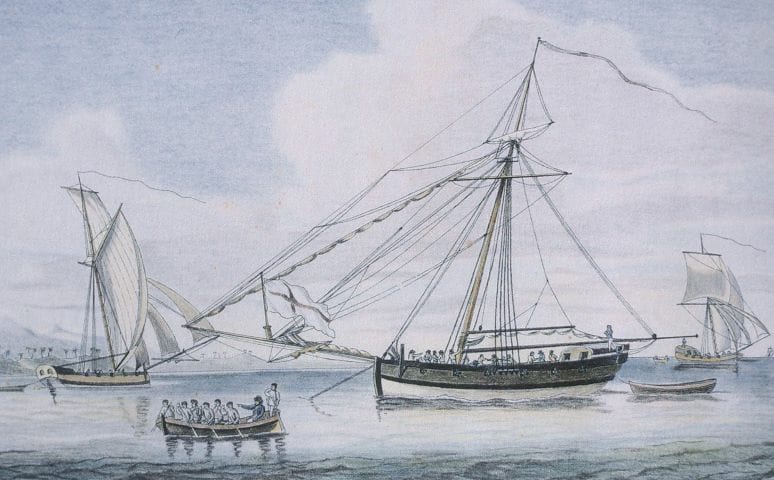Trending Now
If you are an 18th century French botany buff, you may know the name Joseph Dombey.
But most of us aren’t 18th century French botany buffs, and that’s okay. I can bring you up to speed: He was a scientist, dabbled in politics and died in 1794 after British privateers attacked his ship. A privateer was a privately owned ship that committed acts of piracy in the name of a government and got to keep some of their booty – so basically a government sanctioned pirate.
He crossed paths with the Brits more than a few times, and every time they intercepted his ships, they confiscated his botanical samples. You can see his collections even now at the British Museum.
He also tangled with the Spaniards once for the same reasons.

Davy Jones, sitting on his locker. Drawn in 1892
Photo Credit: Wikipedia
The British picked on his ships because England and France were sworn enemies until Napoleon fell in 1815, so French ships were frequent targets for British privateers.
The French privateers, in turn, attacked British ships.
Back to the story.
Dombey’s final voyage to the United States in 1794 was to present Congress with French measurement standards – the ones that are the basis of what we now call the metric system. Of course, the States had declared independence from the British 18 years before, but they were still stuck using the British standard for weight and measures.

Photo Credit: Wikipedia
Dombey was to present the US government with physical objects that could be measured to show the exact standard of one meter and one grave, an old metric eventually replaced with the kilogram.
Dombey wasn’t coming uninvited; in fact, it was Thomas Jefferson himself who sponsored Dombey’s trip. Jefferson appreciated the scientific achievements of the French, and asked Dombey to come in order to strengthen French ties with the U.S. by signing an agricultural agreement.
At the time, Jefferson was working on Congress to abandon the British system of weights and measurements. His hope was to adopt the French system, but he needed Dombey to bring over the physical measures, so they could be copied and distributed to the other states.
Otherwise, people literally didn’t know how long a meter was.

Photo Credit: Wikipedia
But, en route from the port of Le Harve in France to Philadelphia, Dombey’s ship was attacked by the privateers.
Dombey was taken to Montserrat in the Caribbean where the privateers planned to hold him for ransom. Except he died soon after arrival.
His standards were eventually auctioned off with other items from the ship.
By the time the French could get the meter and grave to the new Secretary of State, Edmund Randolph, he’d lost interest in the cause. Dombey’s standards were separated and changed hands a few times, until the grave ended up displayed in the National Institute of Standards and Technology.

Photo Credit: Flickr
It seems, however, we cannot solely blame British pirates for the United States’ resistance to the metric system. When Congress was considering changing over to the meter and grave, they had to deal with the fact that most of the territories west of the Appalachians had already been surveyed using the British based system. It was pretty hard to justify starting all over with a new standard.
Effecting change is all in the timing. And knowing where pirates are, of course.






